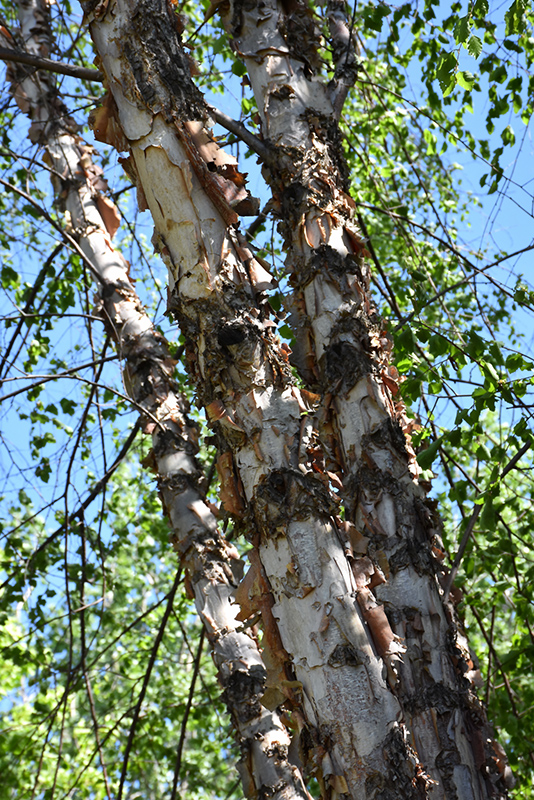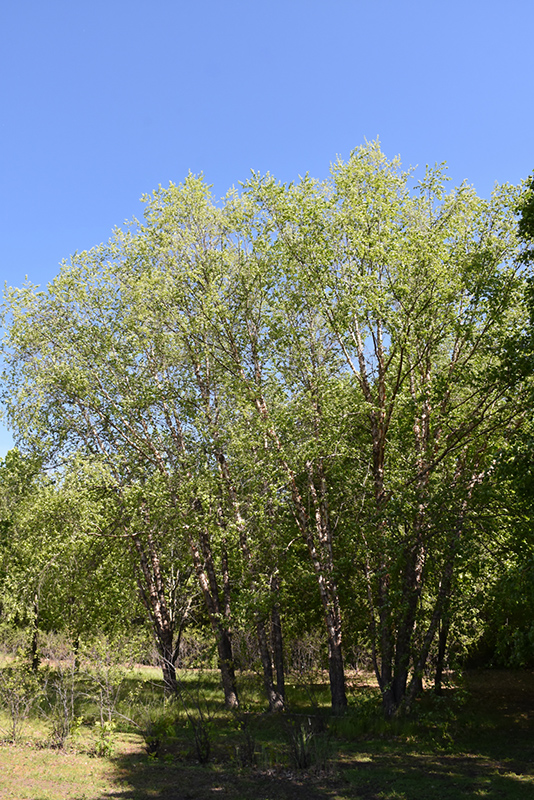>> Home
Northern Tribute® River Birch
Betula nigra 'Dickinson'
Height: 35 feet
Spread: 30 feet
Sunlight:
![]()
![]()
Hardiness Zone: 3a
Other Names: Red Birch
Brand: Bailey Nurseries
Description:
A visually stunning upright oval variety; lustrous medium to dark green leaves have doubly serrated margins; peeling ivory bark exposes the copper-bronze under layer, for great winter interest; performs better in dry, compacted, or alkaline soils
Ornamental Features
Northern Tribute® River Birch has dark green deciduous foliage on a tree with an oval habit of growth. The small serrated pointy leaves turn an outstanding yellow in the fall. The peeling white bark is extremely showy and adds significant winter interest.
Landscape Attributes
Northern Tribute® River Birch is a multi-stemmed deciduous tree with a shapely oval form. Its relatively fine texture sets it apart from other landscape plants with less refined foliage.
This is a relatively low maintenance tree, and should only be pruned in summer after the leaves have fully developed, as it may 'bleed' sap if pruned in late winter or early spring. Deer don't particularly care for this plant and will usually leave it alone in favor of tastier treats. It has no significant negative characteristics.
Northern Tribute® River Birch is recommended for the following landscape applications;
- Accent
- Shade
Planting & Growing
Northern Tribute® River Birch will grow to be about 35 feet tall at maturity, with a spread of 30 feet. It has a low canopy with a typical clearance of 3 feet from the ground, and should not be planted underneath power lines. It grows at a medium rate, and under ideal conditions can be expected to live for 70 years or more.
This tree does best in full sun to partial shade. It is quite adaptable, prefering to grow in average to wet conditions, and will even tolerate some standing water. It is not particular as to soil type, but has a definite preference for acidic soils, and is subject to chlorosis (yellowing) of the foliage in alkaline soils. It is highly tolerant of urban pollution and will even thrive in inner city environments. Consider applying a thick mulch around the root zone in winter to protect it in exposed locations or colder microclimates. This is a selection of a native North American species.

